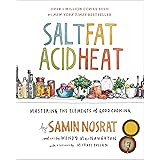The conversation presented in the ‘Six Minute English’ video above effectively introduces a critical concept: the interconnectedness of our dietary choices, personal health, and the planet’s well-being. It is understood that adopting a flexitarian diet, which prioritizes plant-based foods while occasionally including meat, is not merely a lifestyle choice but also a significant step towards mitigating climate change and improving individual health.
This approach to eating is gaining increasing recognition as a practical and sustainable way to navigate the complexities of modern food systems. While some individuals are motivated by ethical concerns regarding animal welfare, a growing number of people are considering the environmental impacts of their meat consumption. The insights shared by Dr. Marco Springmann from the University of Oxford highlight the multifaceted challenges faced by the global food system and the strategic measures required to address them effectively.
Understanding the Flexitarian Diet for Sustainable Living
A flexitarian diet is described as a semi-vegetarian eating plan, predominantly plant-based, with the occasional inclusion of meat, poultry, or fish. This dietary pattern is considered more flexible than strict vegetarianism or veganism, making it an accessible option for many who wish to reduce their meat intake without eliminating it entirely. It is believed that this balance offers both health benefits and a reduced environmental footprint.
The term itself, a portmanteau of “flexible” and “vegetarian,” signifies an adaptability that can make sustainable eating practices more achievable. While some individuals find it challenging to transition to a fully plant-based diet, the flexitarian approach allows for a gradual shift. It is observed that this gradual change often leads to a more diverse diet, rich in fruits, vegetables, legumes, and whole grains.
The Environmental Impact of Meat Consumption
The production of meat, particularly red meat, is known to have a substantial environmental impact, which is a key concern in discussions about climate change. Significant greenhouse gas emissions, including methane and nitrous oxide, are attributed to livestock farming. These gases are considerably more potent than carbon dioxide in trapping heat within the atmosphere.
Extensive land use is also required for grazing animals and cultivating feed crops, often leading to deforestation and habitat loss. Furthermore, considerable amounts of fresh water are consumed throughout the entire meat production process. It is acknowledged that these factors collectively contribute to a strained global food system, necessitating a reevaluation of dietary norms.
A Combination of Measures for a Resilient Global Food System
Dr. Marco Springmann’s research at the University of Oxford emphasizes that a singular solution will not suffice to keep global food systems within environmental limits. Instead, a comprehensive combination of strategic measures is recognized as essential. These measures are designed to address various aspects of food production, consumption, and waste.
1. Prioritizing Healthier, More Plant-Based Diets
A fundamental shift towards diets that are richer in plant-based foods is widely advocated for, and the flexitarian diet is a practical step in this direction. It is understood that such dietary changes not only support individual health but also significantly lessen the environmental burden associated with food production. Emphasis is placed on incorporating a wider variety of plant proteins and nutrient-dense vegetables.
This transition is not about deprivation but rather about discovering new culinary possibilities and embracing a more diverse range of foods. The health benefits, such as reduced risk of cardiovascular diseases and certain cancers, are often highlighted. Furthermore, the decreased demand for resource-intensive animal products contributes directly to environmental sustainability.
2. Implementing Ambitious Technological Improvements in Agriculture
Significant advancements in agricultural technology are considered crucial for a sustainable future. These ambitious improvements are expected to transcend ordinary farming practices, necessitating impressive and innovative solutions. Examples include precision agriculture, which optimizes resource use through data, and the development of alternative proteins.
Precision agriculture, for instance, allows for the targeted application of water and nutrients, thereby minimizing waste and maximizing efficiency. Research and development in areas like lab-grown meat and highly nutritious plant-based alternatives are also seen as vital. It is believed that these technological innovations can significantly reduce the ecological footprint of food production while ensuring food security for a growing global population.
3. Introducing Changes in Farming Management Practices
Alterations in how food is farmed are also identified as a key component of a sustainable food system. Regenerative agriculture, which focuses on soil health, biodiversity, and carbon sequestration, is increasingly being explored. Practices such as crop rotation, reduced tillage, and integrated pest management are understood to improve ecosystem resilience.
These revised management techniques aim to restore soil vitality, reduce reliance on synthetic inputs, and foster ecological balance. It is recognized that a move towards more sustainable and ethical farming methods not only benefits the environment but can also improve the long-term viability of agricultural lands. The health of the planet’s ecosystems is intrinsically linked to how food is produced.
4. Reducing Food Loss and Waste Across the Supply Chain
The issue of food loss and waste is acknowledged as a significant contributor to environmental degradation and resource inefficiency. It is estimated that a substantial portion of food produced globally is either lost or wasted before it reaches consumers. This waste represents an unnecessary use of land, water, energy, and labor.
Measures to reduce food loss and waste include improvements in harvesting and storage techniques, enhanced infrastructure for transportation, and increased consumer awareness regarding food expiration dates and portion sizes. It is understood that by minimizing waste at every stage, from farm to fork, considerable environmental and economic benefits can be realized. Policy interventions and educational campaigns are often deployed to tackle this pervasive problem effectively.
Red Meat as a Luxury: Health and Environmental Guidelines
The concept of treating red meat as a “luxury” rather than a dietary staple is strongly advocated based on scientific literature. It is recommended that consumption of red meat, including beef, pork, and lamb, should not exceed one serving per week. This guidance is derived from extensive reviews of healthy diet literature and acknowledges both health and environmental implications.
A typical serving of red meat is considered to be around 3 ounces (85 grams), which is roughly the size of a deck of cards. Exceeding this weekly limit is associated with increased risks of certain health conditions, while also contributing disproportionately to environmental impact. It is believed that by moderating red meat intake, significant personal and planetary health benefits can be achieved. This shift encourages individuals to explore a wider variety of protein sources, such as legumes, nuts, seeds, and plant-based alternatives.
The Scientific Foundation: Surveying the Literature
The recommendations provided by Dr. Springmann’s report are not based on conjecture but are firmly rooted in scientific evidence. It is explained that the process involved “surveying the literature,” which means a thorough examination and analysis of previously published scientific research on healthy diets and environmental impacts. This rigorous approach ensures that advice is evidence-based and credible.
This process typically includes reviewing peer-reviewed studies, meta-analyses, and systematic reviews from diverse scientific disciplines. By synthesizing a vast body of existing knowledge, comprehensive and reliable conclusions can be drawn. It is understood that such scientific rigor is paramount when formulating public health and environmental policy recommendations, particularly regarding complex issues like the global food system and sustainable meat consumption.
Sustainable Bites: Your Questions on Diet and Environment
What is a flexitarian diet?
A flexitarian diet is a semi-vegetarian eating plan that mainly focuses on plant-based foods but occasionally includes meat, poultry, or fish. It’s a flexible way to reduce meat intake without eliminating it completely.
Why is eating meat a concern for the environment?
Producing meat, especially red meat, contributes significantly to climate change through greenhouse gas emissions like methane and nitrous oxide. It also requires extensive land and water resources, leading to deforestation and habitat loss.
What are some key ways to create a more sustainable food system?
Making the global food system sustainable involves several steps, including eating more plant-based foods, improving farming technologies, using better farming practices, and reducing food waste. These combined efforts aim to lessen the environmental impact of food production.
How much red meat is recommended to eat each week?
Based on scientific recommendations, it’s advised to treat red meat as a luxury and consume no more than one serving (around 3 ounces) per week. This moderation benefits both individual health and the environment.











